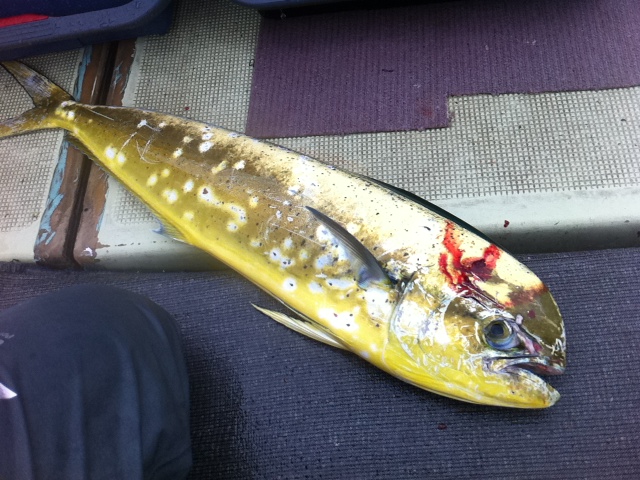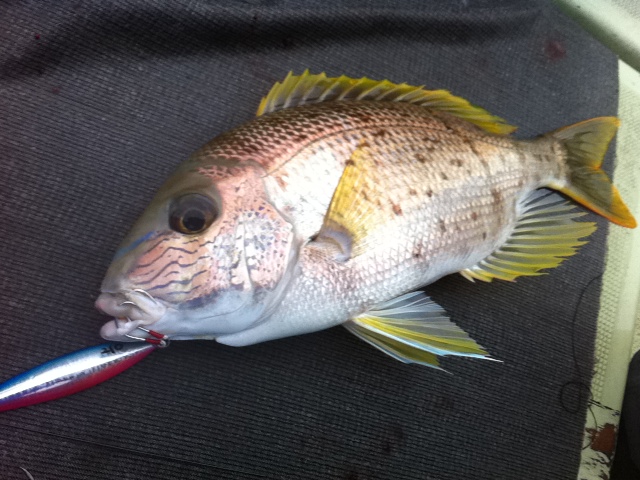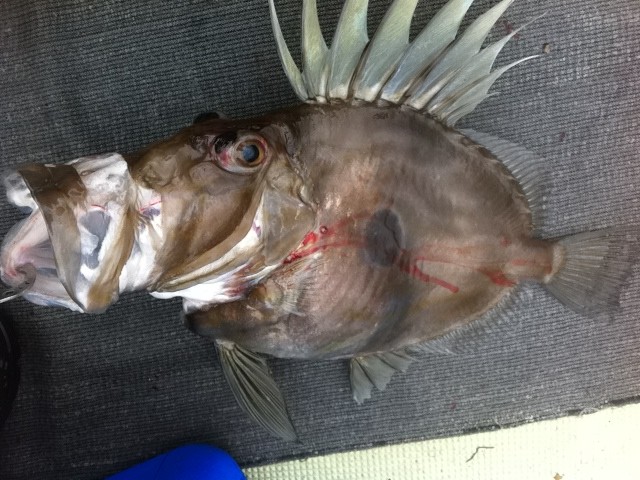Coryphaena hippurus
[fancy_header3]Name[/fancy_header3]
Binomial: Coryphaena hippurus
English: Dolphin Fish or Mahi Mahi
Japanese: Shiira
[fancy_header3]Deliciousness[/fancy_header3]
[fancy_header3]Cooking[/fancy_header3]
sashimi, deep-fry, saute
[fancy_header3]Remarks[/fancy_header3]
Hawaiians call it Mahi Mahi and they love this fish.
Sashimi is very good when fresh. But it’s quick to go a slight smelly.
It goes very well when heated in butter or oil. The texture is soft and full with fine fibers.
Related Posts
2 Comments
Leave a Reply Cancel reply
Categories
- 1. SPJ (57)
- 1-1. Principles (9)
- 1-2. Techniques (11)
- 1-3. Setup (17)
- 1-4. FAQ (19)
- 1-5. Tackles (3)
- 1-6. Video Gallery (2)
- 2. Other Offshore Games (5)
- 3. Fishing Report (105)
- 3-1. Totos (25)
- 3-2. Readers (72)
- 4. Fish Cooking (19)
- 4-1. Iki-Jime (3)
- 4-2. The Art of Sashimi (5)
- 4-3. Recipe (7)
- 4-4. Seasoning (3)
- 5. Fishing Charter (6)
- Fish (12)






Hit Totos,
Once again, I need your recommendations, this time about how to close and treat mahi-mahi fishes.
We all know the dorado or mahi-mahi or dolphin fish is very dangerous and difficult do close and maintain it fresh. Each summer I catch a lot of them, and I use the meat mainly for fillets. But many times I had to discard them because the meet was not good… I am a very carefully person, although did not apply ikejime technics before because I didn’t know it. I will do it from known on.
I read all your ikejime instructions (excellent). The problem is that before before “ikejime” and blod the fish, we need to close it and try to do that without stressing the fish, almost impossible for mahi mahi fishes…
I know you recommend to knock it before land… but this is also very difficult and we might lose the fish … Could you please give us detailed explanations and hints on how you knock it and what tool you use for it? Dou you usually use a fishing gaff to hit his head before knocking it? I read we should try to do the least possible cuts, because it might get bacterias etc, but for mahi-mahi the fishing gaff seems to be a “must” tool… Do you knock it outside the boat? If not, how do you hold it? And how to avoid not to stress the mahi mahi (is sounds impossible :-)?
Also, after ikejime, is it recommended or better to take out the guts, gills and brush off all the blood immediately, even in the boat, for this particular fish?
OK, any suggestions how to treat this particular fish would be very useful.
Thank you very much,
Daniel
Hi.
I rarely catch Mahi-Mahi actually. it’s not exactly a jigging target. When we do, we try to use the net as much as possible. When we use the gaff, one person holds it up, and grips the tail, while the angler unhooks it. Then we land it, still one person is holding on the tail, while the other person nails the brain. He may have to blindfold it with a towel. It always takes 2 persons. Still, the fish can go out of control. Then some people say you’d better knock it unconscious with a wood hammer. But I personally don’t like hitting the fish with a hammer.
I personally don’t have a routine to close Mahi-Mahi because it’s not my usual. But if you get often, I understand you want to systemize it.
The facts are:
The fish goes crazy when landed.
You don’t want to let the fish go wild on the hard surface because it messes up the meat and you will get blood all over the body.
Blindfold can calm the fish down.
If your boat has the ocean water pump, hose the ocean water into the mouth, and it will calm down.
Use a cheap foam mattress to land on it.
Here’s a video you may find interesting.
https://www.youtube.com/watch?v=UTm1WoMi_08&t=955s
No, I never clean the fish on the boat. You just need to remove the spinal cord and drain the blood on the boat.
But Mahi-Mahi has Anisakis sometimes. If you are cooking the fish, don’t bother. But if you are eating sashimi, you may want to gut it when you kill it. Anisakis usually live in the guts. When the fish dies, they move into the muscles. Also, Mahi-Mahi holds a lot of bacteria in the slime on the skin. When you fillet it, first you remove all the bones, then make sure you wash your knife and your chopping board before you go to the next step in which you touch the meat or the meat touches the chopping board.